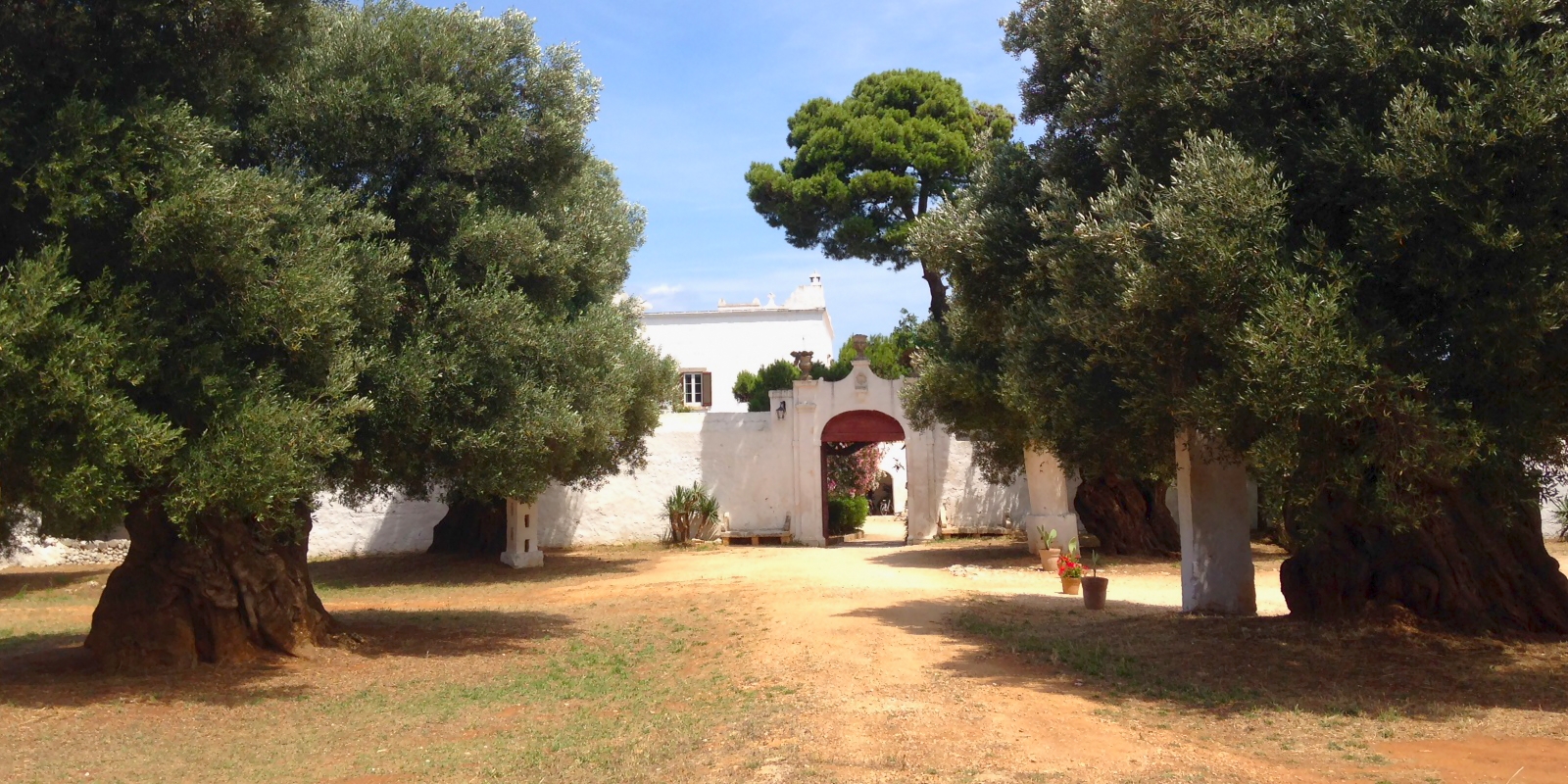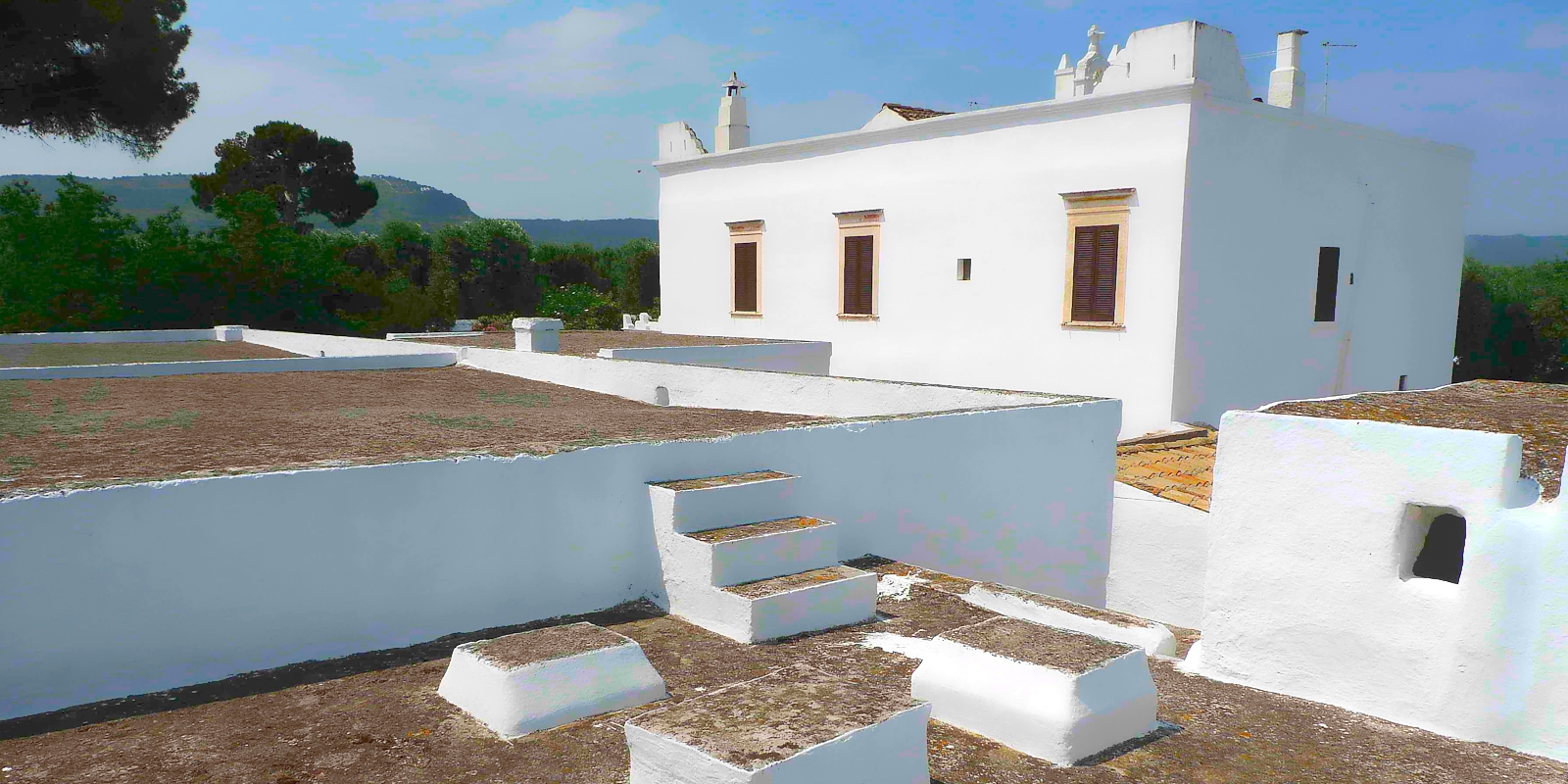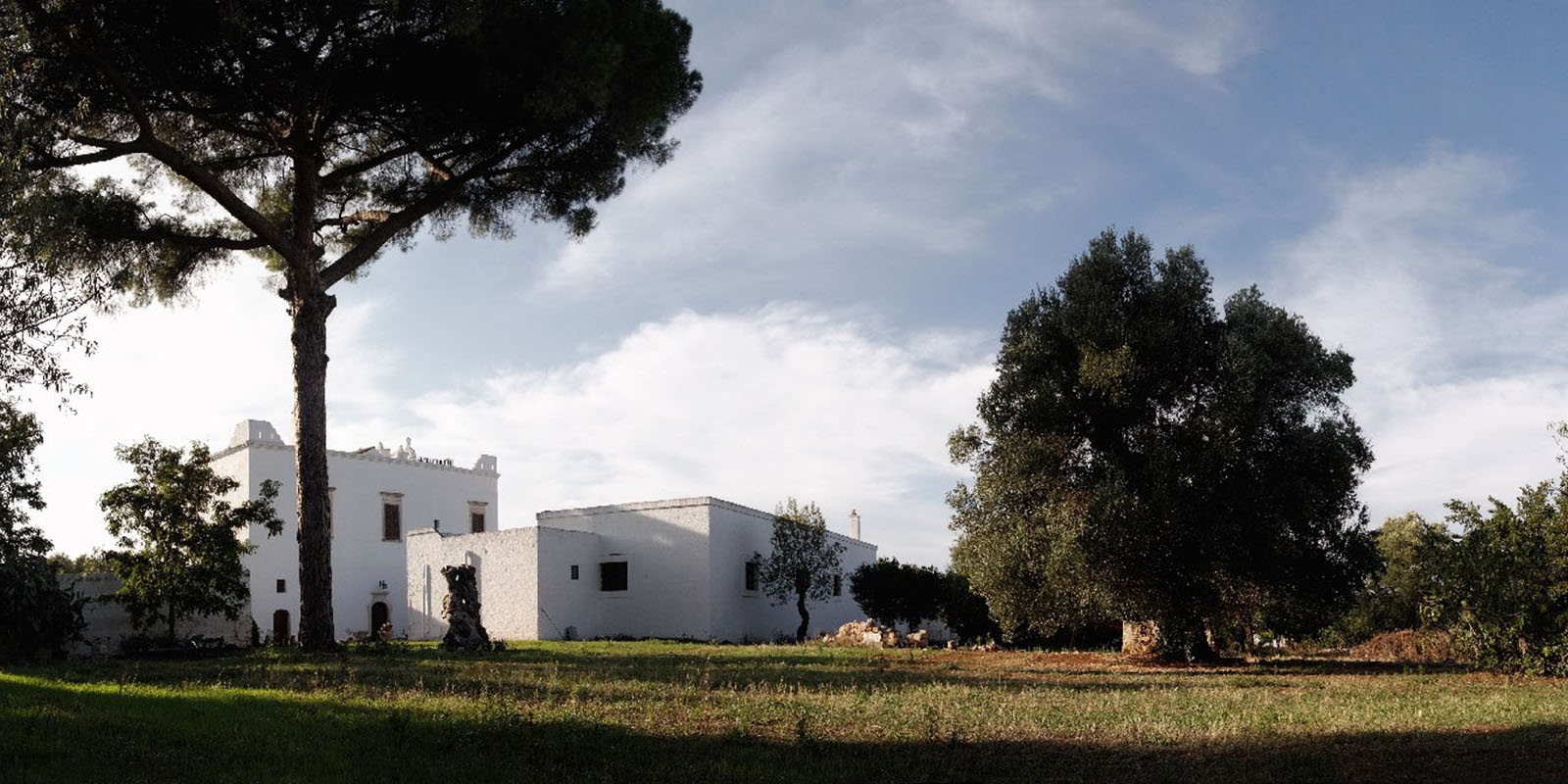Within the ancient Apulian olive trees surrounding Ostuni, rises up one of the oldest masseria farmhouses. This masseria, called Masseria Brancati, dates back to the early Medieval period or even to the Roman one, which existence is evidenced by a very old underground olive mill.
The noble Brancati family, which comes from the region of Veneto, arrived in Ostuni in the fourth century to buy olive groves, to produce olive oil and then to trade it on the Genovese and Venetian markets.
The masseria was listed in the aristocracy register until this register disappeared at the beginning of the seventeenth century. About the fifteenth century the Brancati family contributed for the growth of the masseria by building other constructions above and around the underground olive mill. These structures were used as habitations, stables and barns and later the family constructed high walls that fortified the site. The walls were provided with walkways, gun ports and a tower which is currently incorporated in the living quarters which were enlarged between the XVIII and the XIX century.
In 1768 a chapel was built next to the main structure by the Piscopo family. Inside, a perfectly preserved, rococo style altar made of soft stone can be seen. The facade of the mansion, with its three ways and refined mouldings, dates back to the seventeenth century. The upper floor was finished in the eighteenth century by the masserias' owner Don Domenico Rodio in a neoclassic style.
At the beginning of the 1800s, the Rodio family took over the masseria from the Piscopo family and in 1880 they had a new olive mill with grinding stones, built in front of the main structure. Currently in this building, which houses the Museum dedicated to olive oil farming culture, the perfectly preserved mill stones are kept.
 Click to open image!
Click to open image!
Click to open image!
Click to open image!
 Click to open image!
Click to open image!
Click to open image!
Click to open image!
 Click to open image!
Click to open image!
Click to open image!
Click to open image!
 Click to open image!
Click to open image!
Click to open image!
Click to open image!
 Click to open image!
Click to open image!
Click to open image!
Click to open image!
 Click to open image!
Click to open image!
Click to open image!
Click to open image!
 Click to open image!
Click to open image!
Click to open image!
Click to open image!
http://www.masseriabrancati.it/index.php/en/farmhouse#sigProGalleria3b5f785ce9






